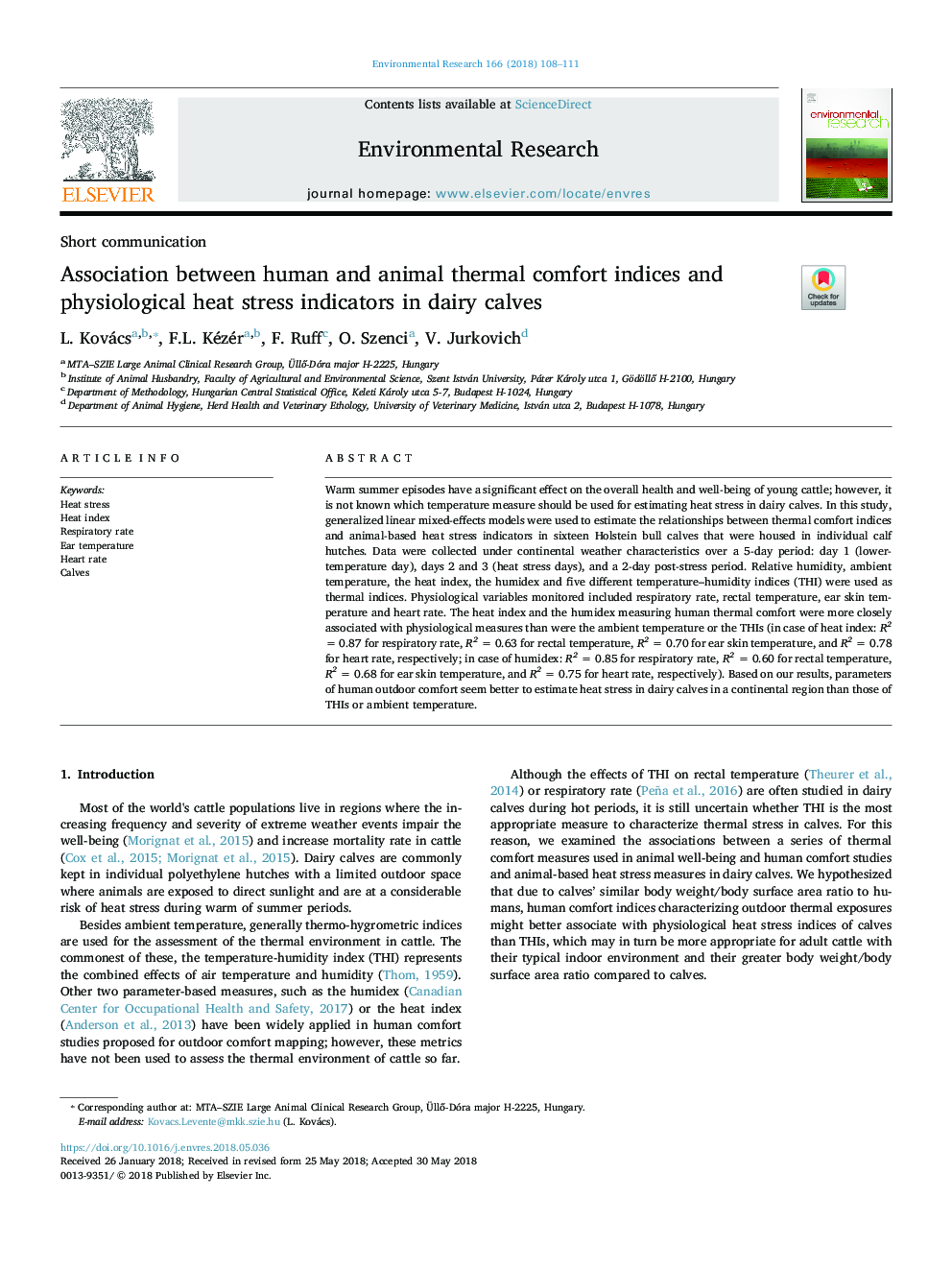| Article ID | Journal | Published Year | Pages | File Type |
|---|---|---|---|---|
| 8868871 | Environmental Research | 2018 | 4 Pages |
Abstract
Warm summer episodes have a significant effect on the overall health and well-being of young cattle; however, it is not known which temperature measure should be used for estimating heat stress in dairy calves. In this study, generalized linear mixed-effects models were used to estimate the relationships between thermal comfort indices and animal-based heat stress indicators in sixteen Holstein bull calves that were housed in individual calf hutches. Data were collected under continental weather characteristics over a 5-day period: day 1 (lower-temperature day), days 2 and 3 (heat stress days), and a 2-day post-stress period. Relative humidity, ambient temperature, the heat index, the humidex and five different temperature-humidity indices (THI) were used as thermal indices. Physiological variables monitored included respiratory rate, rectal temperature, ear skin temperature and heart rate. The heat index and the humidex measuring human thermal comfort were more closely associated with physiological measures than were the ambient temperature or the THIs (in case of heat index: R2 = 0.87 for respiratory rate, R2 = 0.63 for rectal temperature, R2 = 0.70 for ear skin temperature, and R2 = 0.78 for heart rate, respectively; in case of humidex: R2 = 0.85 for respiratory rate, R2 = 0.60 for rectal temperature, R2 = 0.68 for ear skin temperature, and R2 = 0.75 for heart rate, respectively). Based on our results, parameters of human outdoor comfort seem better to estimate heat stress in dairy calves in a continental region than those of THIs or ambient temperature.
Related Topics
Life Sciences
Environmental Science
Health, Toxicology and Mutagenesis
Authors
L. Kovács, F.L. Kézér, F. Ruff, O. Szenci, V. Jurkovich,
